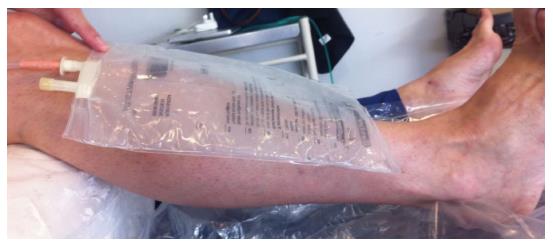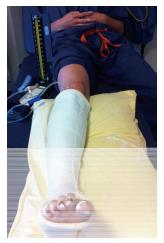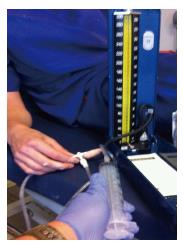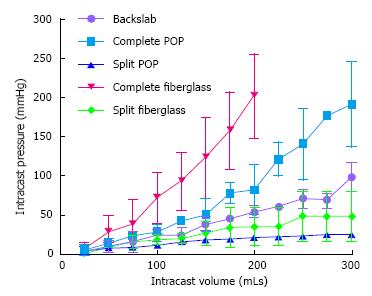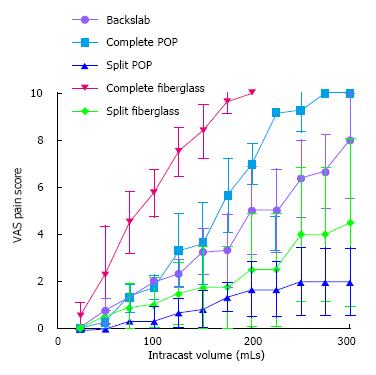Copyright
©The Author(s) 2017.
World J Orthop. Feb 18, 2017; 8(2): 170-177
Published online Feb 18, 2017. doi: 10.5312/wjo.v8.i2.170
Published online Feb 18, 2017. doi: 10.5312/wjo.v8.i2.170
Figure 1 Photo demonstrating the application of a 1-L emptied expandable bag onto a healthy right lower leg.
Figure 2 Photo demonstrating the placement of a closed water system circuit attached to a 1-L expandable bag under different types of casts, which had been applied to a healthy right lower limb.
An intravenous giving set was connected the emptied bag with a three-way tap.
Figure 3 Photo demonstrating how 25 mL aliquots of saline were injected into the system and the surface cast pressures were directly measured using a sphygmomanometer.
Figure 4 Graph indicating intracast pressures (mmHg) generated by different types of lower limb casts (mean + standard error bars).
Both complete fiberglass and complete plaster of Paris casts (POP) generated the greatest casts pressures. The surface pressures were significantly reduced when these casts were split. Split POP and fiberglass casts generated significantly less pressure than backslabs.
Figure 5 Graph indicating pain levels generated by different types of lower limb casts, as measured by Visual Analog Scores (mean + standard error bars).
Complete fiberglass casts generated the highest pain levels. Split fiberglass casts produced significantly less pain at intracast volumes of 75 mL and greater. There was no significant difference in pain generated by complete plaster of Paris casts (POP) and backslabs when the intracast volume was 200 mL or lower. VAS: Visual Analog Scores.
- Citation: Chaudhury S, Hazlerigg A, Vusirikala A, Nguyen J, Matthews S. Lower limb intracast pressures generated by different types of immobilisation casts. World J Orthop 2017; 8(2): 170-177
- URL: https://www.wjgnet.com/2218-5836/full/v8/i2/170.htm
- DOI: https://dx.doi.org/10.5312/wjo.v8.i2.170









